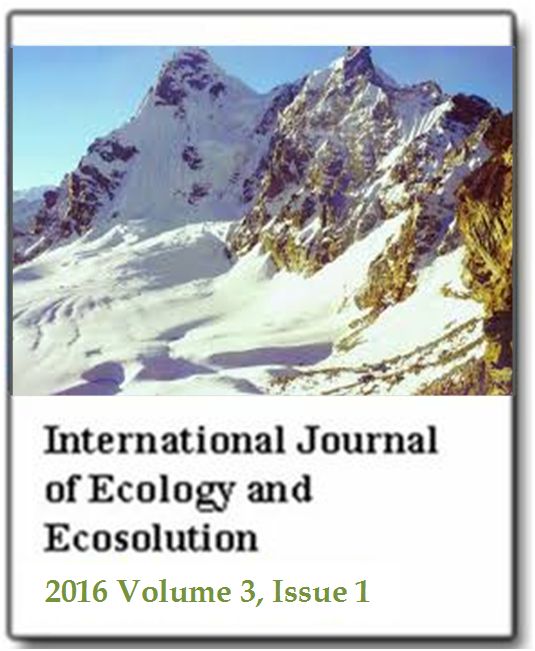Effects of biosolids amendment rates on percentage organic matter, total nitrogen and biomass yield of degraded soils of selected sites in Abia State, Nigeria
O. G. OguInternational Journal of Ecology and Ecosolution
Published: March 29 2016
Volume 3, Issue 1
Pages 7-11
Abstract
A study was conducted to determine the effects of biosolids amendments rates on percentage OM, total N and biomass yield of degraded soils of some selected sites in Abia State, Nigeria (Amaiyi, Oruruala and Igbere sites). Sewage sludge was collected from the Enugu State Environmental Protection Agency sewage dumpsite at Ugwuaji Nike, and composted with wood–chips in the ratio of 60:40 for 21 days. The ameliorating effects of biosolid on degraded soils were carried out in a 4×3 factorial experiment laid out in a randomized complete block design with three replicates. The biosolids were then incorporated into the soil at the rates of 0 t/ha (control), 10, 20 and 30 t/ha and monitored. Soil samples 0 to 30 cm depths were then taken 157 days after biosolids incorporation. Each composite sample was air-dried, crushed and sieved using a 2 mm NO 10 mesh sieve and then analyzed for organic matter, total N for each treatment rate. Organic matter and total N were determined using standard methods. Vegetation counts were taken and harvested after 157 days, weighed and re-weighed after oven-drying at 105°C for 24 h. Data was analyzed statistically using student’s t-test. Results showed that the mean values of treatment rates 10, 20 and 30 t/ha for OM were: 1.43, 1.56 and 1.70% respectively against 1.30% of the control, while the mean values for total N were 0.14, 0.19 and 0.25 mg/L respectively against 0.04 mg/L of the control. Though there were significant differences between treatment rates and OM, total N in comparison with the control, more significant differences (P < 0.05) were recorded at 30 t/ha treatment. Results also showed that as the treatment rates increased, OM and total N increased progressively in all the sites with resultant increase in biomass yield, and maximum yield of biomass obtained in 30 treatments. The mean values for biomass yield at 0, 10, 20 and 30 treatments were recorded as 298.62, 557.15, 707.33 and 861.10 g/m2, respectively. There was a positive correlation between OM and total N across all levels of treatments. Degraded soils responded positively to the incorporation of biosolids, and their quality and biomass yield improved as the application rates increased. Increase in biosolid application rates increases the level of nutrients in degraded soils as shown from the results of this study. That is as the treatment rates increase from 0 to 10, 20 and 30 t/ha, the nutrient quality of the soil and biomass yield increase. Long term studies to determine the effect of incorporating biosolids on the buildup of N and OC are necessary for a better understanding of the overall benefits of biosolids incorporation into soils.
Keywords: Degraded soils, biosolids, amendment rates, organic matter, total N, biomass yield.
Full Text PDF
